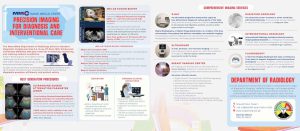Most people do not attend to their dental health even though it is integral to overall health. It is frequently ignored because many do not like visiting the dentist. Maintaining good oral health may be cost-effective, but it becomes expensive when people start skipping dental visits.
Unfortunately, when people neglect dental health, it can equate to dental healthcare with hefty fees and painful procedures.
People are generally scared of blood and tooth extractions when dealing with dental health. Their issues, such as toothaches, may be rooted somewhere else. Therefore, they may undergo non-invasive appointments.
A new technique has emerged in dental medicine thanks to advancements in medical science, giving patients more than just a great smile. Known as craniodontics, this relatively new take on dental medicine has opened doors for dentists to help people address certain health issues. Read on to learn more.
What is Craniodontics?
Craniodontics is a new diagnosis and treatment in dentistry discovered by Dr. Gerald H. Smith, involving orthodontics, osteopathy, manual medicine, and orthopedics, among others.
This interdisciplinary approach is based on the fact that the skull is not a rigid structure of just one (1) movable lower jaw but a mobile cranial structure that can balance without needing surgery. Its primary areas of intersection are the head, face, and neck.
Balance and symmetry are important goals of craniodontics. A symmetrical face means that muscles function well, can deliver nutrients, and effectively remove toxins accumulating in the skin. Being in an asymmetric state means one side of the face, jaw, and skull are lengthened while the other is shortened.
How does craniodontics matter to overall health? Many patients suffer from headaches, migraines, and pain in the face, neck, and back. Dental problems usually cause these.
These symptoms are found in cases of malocclusion or the misalignment of teeth when the jaw is closed, which is not only the result of an abnormality in the structure of the skull and jaws but could also be caused by inadequate dental/orthodontic work or poor-quality prosthetics.
Simply put, craniodontics is the technique that can help solve these problems without going through surgery.
The Fundamentals of Craniodontics Treatment
As mentioned earlier, malocclusion is an abnormality in the position of the teeth when the jaw is closed. How does this happen?
Jaw joints or temporomandibular joints (TMJ), which hold the lower jaw in place, are connected to the skull by muscles and tendons. It is closely related to how the upper and lower teeth fit when they come into contact with each other, affecting jaw movements like speaking and chewing.
When teeth fit together, it is called occlusion. If they are not in proper relation to each other and the TMJ, the jaw automatically shifts position to fill in the gaps and misalignments in the mouth and becomes a malocclusion.
When malocclusion exists, there can be symptoms like clenching, grinding, premature tooth wear, stress on the muscles and tendons, and sleep disturbance.
Craniodontics enters the situation as one of the possible treatments for malocclusion. The technique allows the bones of the skull, TMJ, muscles, and dentition to return to their optimal physiological state, where the symptoms disappear “by themselves.” This therapeutic approach can correct even the most complex malocclusion possible.
In general, osteopaths mainly identify skull distortions by palpation, while orthopedists and orthodontists detect these through X-ray images and jaw models of the patient. Through these methods, experts get a diagnostic algorithm and develop a treatment approach like these:
1. Correction of cranial injuries, upper jaw, and maxillary dentition to the skull
2. Correction of the position of the lower jaw to the upper jaw
While other dentistry techniques only address conditions at the mandibular complex level, craniodontics uses a special Advanced Lightwire Functionals (ALF) appliance that changes the position of the upper jaw, facial bones, and skull. It also uses specific devices to balance the lower jaw and other special osteopathic techniques.
Stages of Craniodontics Treatment
Craniodontics treatment consists of three (3) stages.
Stage 1 is the TMJ and neuromuscular stabilization, where a proper posterior vertical component of the occlusion is set up, including the position of the lower jaw.
Stage 2 involves cranial orthopedic balance wherein the eyes’ roll and yaw are balanced. This
stage also focuses on fixing the upper jaw’s position and establishing the shape of the upper jaw and its dentition.
Stage 3 is a holistic occlusal integration in which the teeth’s correct position and shape are laid down to get the final vertical measurement of occlusion. It is also the stage where experts check the occlusal relationships and functional movements of the lower jaw.
Experts can only proceed to Stage 3 (in which braces are already used) if patients are “asymptomatic” in terms of the TMJ and have no apparent cranial and skeletal abnormalities. Treatment can last from four (4) months to one and a half (1 ½) years, and improvements take much longer than other techniques since it affects structures more extensively.
Results of the treatment may vary on the symptoms one experiences. Aside from alignment of the facial structure, it can also result in fewer headaches, migraines, and back pain.
More than Just a Smile
Craniodontics is still a relatively foreign concept in the dental field, but it is showing great potential as the primary treatment for patients with malocclusion. Not only does it give a great smile, but it also improves a patient’s physiological and psychological health.
Don’t know where to start? Check out MakatiMed’s extensive dental services today to learn more about our dental medicine treatment program.











